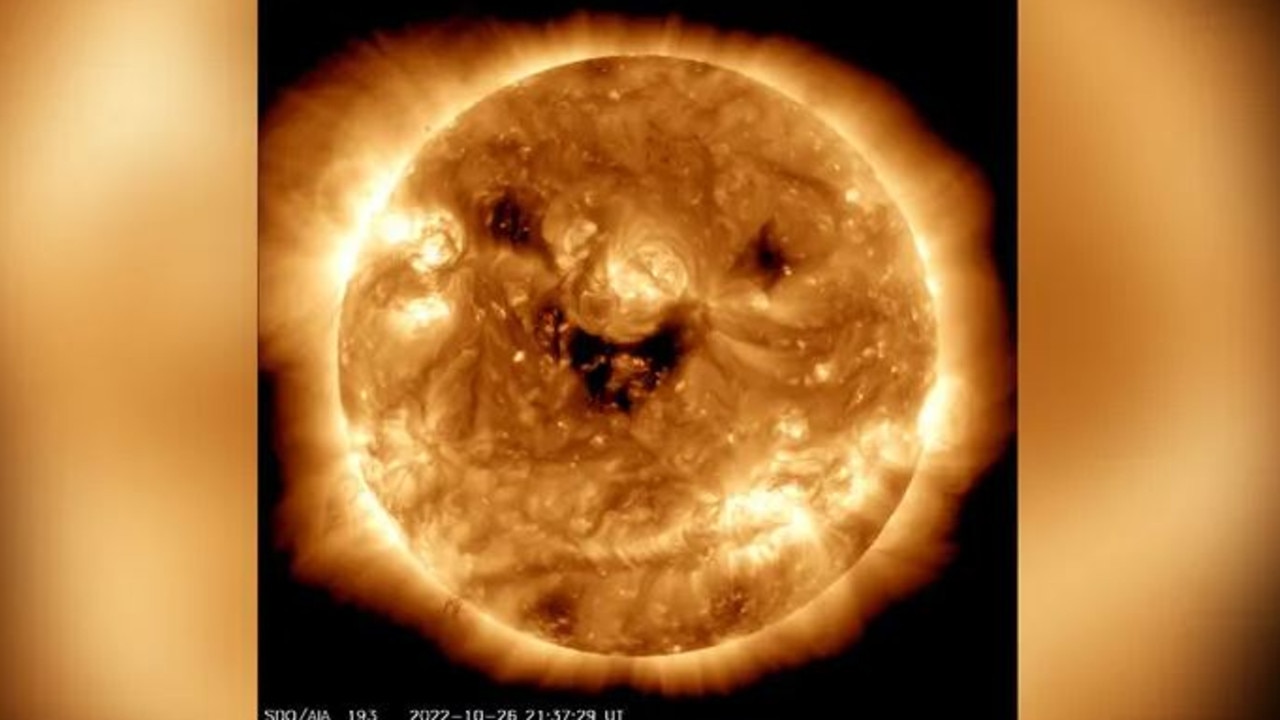Why NASA‘s image of ‘smiling’ sun is no laughing matter
Despite its seemingly “sunny” appearance, it turns out that NASA’s recent image of the grinning sun isn’t as cheery as it looks.
Despite its seemingly “sunny” appearance, an image of the grinning sun isn’t as cheery as it looks.
NASA’s Solar Dynamics Observatory previously caught an image of the sun in ultraviolet light with three dark spots on its surface on October 26, giving the illusion the sun was smiling.
The smiling sun followed a partial solar eclipse on Tuesday, though the two events were unrelated, Fox News reports.
What many viewed as a giant pumpkin in the sky, though, consequently prompted a minor geomagnetic storm watch on Saturday.
Want to stream your news? Flash lets you stream 25+ news channels in 1 place. New to Flash? Try 1 month free. Offer available for a limited time only >

The dark patches, formally called coronal holes, are areas through which fast solar wind gushes out into space.
The National Oceanic and Atmospheric Administration’s Space Weather Prediction Centre issued an alert on Saturday, stating the coronal holes were “anticipated to enhance and disturb the solar wind environment and lead to unsettled conditions”.
Conditions were expected to go on until Wednesday. However, no “significant transient or recurrent solar wind features” are expected along with geomagnetic storms.
The coronal holes appear dark on the surface because they’re cooler and less dense than the regions surrounding them. They can develop at any moment and anywhere on the sun, with the capability to disrupt power and other Earth-based systems, including spacecraft operations. Coronal holes are ranked from G1 to G5, with G1 being the least powerful.

More Coverage
NASA posted on social media that three solar flares were detected in the past week as of October 30, along with 23 coronal mass ejections.
The three-minute video shared from NASA’s Solar Dynamic Observatory gave viewers a look at the smiling sun.
This article originally appeared on Fox News and has been reproduced with permission





